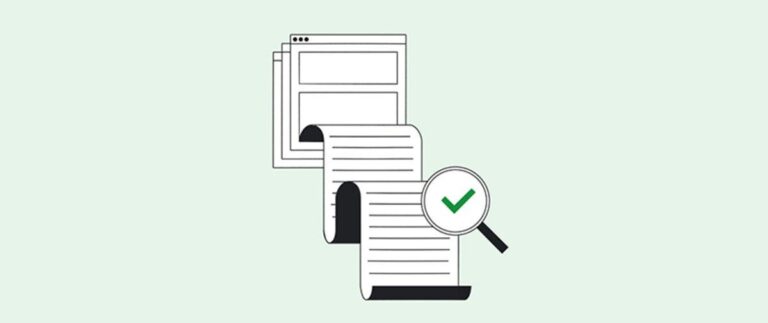In an era marked by an unprecedented surge of misinformation, the role of fact-checkers has garnered significant attention and expectation. However, a recent analysis by The New York Times challenges the prevailing belief that fact-checking alone can stem the tide of falsehoods undermining public discourse. The article argues that while fact-checkers play a crucial role in exposing inaccuracies, their efforts are insufficient to address the deeper social and psychological dynamics fueling the spread of misinformation. This piece explores the limitations of fact-checking in isolation and calls for a more comprehensive approach to safeguarding truth in the digital age.
The Limits of Fact-Checking in Combating Misinformation
While fact-checking organizations have strengthened the fight against misinformation, their influence is inherently limited by several factors. Firstly, the sheer volume and speed of false information shared on social media platforms often outpace the capacity of fact-checkers to respond in real time. Moreover, fact-checks frequently fail to reach the very audiences most susceptible to misinformation, who may already distrust mainstream media sources. This creates a paradox where verified truths do not always penetrate the echo chambers in which misleading facts flourish.
Additionally, cognitive biases and emotional attachments to certain narratives make it difficult for fact-checks to alter deeply held beliefs. According to recent studies, individuals are more likely to dismiss corrections that challenge their worldview, a phenomenon known as the “backfire effect.” Below is a summary of key obstacles fact-checkers face:
- Speed and Scale: Misinformation spreads faster than corrections.
- Audience Reach: Fact-checks often miss vulnerable demographics.
- Trust Deficit: Distrust in media undermines fact-check effectiveness.
- Psychological Resistance: Belief perseverance and backfire effect.
| Challenge | Impact | Example |
|---|---|---|
| Speed | Corrections lag behind viral misinformation | False health claims spreading faster than debunks |
| Reach | Fact-checks don’t reach all social groups | Echo chambers on fringe social networks |
| Trust | Distrust in media discredits fact-checks | Polarized news environments |
How Cognitive Bias Undermines Truth Verification Efforts
Cognitive bias presents a formidable challenge to the efficacy of truth verification processes. These mental shortcuts, ingrained in human thinking, lead individuals to favor information that aligns with pre-existing beliefs, often sidelining objective facts. When fact-checkers present corrections, the corrective information sometimes triggers a backfire effect, causing people to cling even more stubbornly to falsehoods rather than reconsider their positions. This psychological defense mechanism erodes trust in fact-checking institutions and amplifies misinformation’s resilience.
Additionally, several prevalent cognitive biases complicate the verification landscape:
- Confirmation Bias: The tendency to seek and interpret information in ways that confirm personal views.
- Anchoring Bias: Over-reliance on initial information, even when subsequently corrected.
- Availability Heuristic: Judging the truth based on how readily information comes to mind, often influenced by recent exposure or media coverage.
| Bias Type | Impact on Fact-Checking | Typical Response |
|---|---|---|
| Confirmation Bias | Dismissal of contrary evidence | Selective acceptance |
| Anchoring Bias | Resistance to update beliefs | Clinging to first impression |
| Availability Heuristic | Overestimating frequent info | Skewed perception of reality |
The Role of Media Literacy in Building Resilient Audiences
In an era dominated by rapid information flow and digital platforms, audiences must evolve from passive consumers into critical analysts of content. Rather than relying solely on fact-checkers as gatekeepers of truth, individuals need to develop skills to discern bias, identify misinformation, and understand the context behind the headlines they encounter. This transformation requires educational initiatives that focus on media literacy as a lifelong skill, empowering people to navigate the complexities of news ecosystems with skepticism and informed judgment.
- Question sources: Understand who is behind a story and their potential agenda.
- Recognize framing: Analyze how information is presented and what might be omitted.
- Cross-verify facts: Use multiple credible outlets rather than a single authority.
To illustrate the impact of media literacy, consider the following data from a recent survey on audience responses to misinformation:
| Audience Type | Ability to Spot Misinformation | Likelihood of Sharing False News |
|---|---|---|
| High Media Literacy | 85% | 10% |
| Moderate Media Literacy | 60% | 35% |
| Low Media Literacy | 30% | 70% |
These figures highlight how cultivating a well-informed public is not just desirable but essential in constructing resilient audiences capable of sustaining democratic discourse and holding power to account.
Strategies Beyond Fact-Checking for Restoring Public Trust
Restoring public trust requires more than just debunking false information. It demands a multifaceted approach that fosters deeper engagement and transparency. Communities need to be actively involved in dialogues that emphasize shared values and critical thinking skills, empowering individuals to assess information independently. Media organizations and fact-checkers must expand their roles to facilitators of understanding rather than mere arbiters of truth, creating spaces for nuanced conversations that address root causes of misinformation.
Key tactics to rebuild credibility include:
- Community Collaboration: Partnering with local leaders and grassroots organizations to tailor trust-building efforts.
- Media Literacy Education: Implementing widespread programs aimed at teaching people how to critically evaluate sources.
- Transparent Communication: Media outlets openly sharing their methodologies and correcting mistakes promptly.
- Emotional Intelligence in Messaging: Crafting narratives that resonate empathetically without sacrificing factual accuracy.
| Strategy | Impact | Example |
|---|---|---|
| Community Collaboration | High | Local fact-checking workshops |
| Media Literacy Education | Medium | School curriculum integration |
| Transparent Communication | High | Public corrections and editorials |
| Emotional Intelligence in Messaging | Medium | Empathy-driven storytelling |
The Conclusion
In an era defined by the rapid spread of misinformation, the limitations of fact-checkers have become increasingly clear. While their role remains crucial in upholding journalistic integrity, relying solely on these defenders of truth is not a viable solution to the broader challenges facing public discourse. As The New York Times highlights, combating falsehoods requires a multifaceted approach—one that involves technological innovation, media literacy, and a collective commitment to critical thinking. Ultimately, safeguarding the information ecosystem is a responsibility shared by individuals, platforms, and institutions alike, underscoring that fact-checkers, though essential, cannot save us alone.







